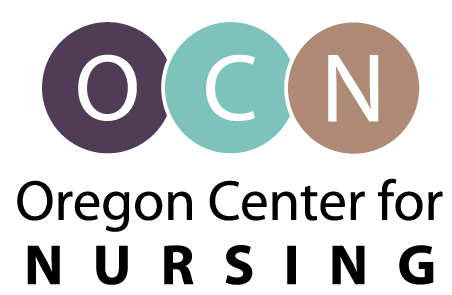It’s easy to point out the challenges facing Oregon’s nursing workforce. We write about them … constantly. Extensively. Obsessively?
When the focus centers on all the challenges and obstacles, it is easy to feel discouraged and think things aren’t getting better. And yet, things ARE getting better.
At the National Forum of State Nursing Workforce conference last June, Dr. Peter Buerhaus gave a presentation on the good, the bad, and solutions to nursing workforce challenges.
Dr. Buerhaus shared a list of good things that are happening in nursing nationally, and we wanted to see how those good things translate for Oregon. In fact, there are some great things happening in Oregon.
1
Nurses are better educated
From 2014 to 2018, the number of nurses with a Bachelor’s degree in nursing (BSN) has more than doubled, and the number of nurses with a Master’s in Nursing has almost tripled. Nurses have also heeded the call for doctoral education, with more than 200 nurses holding a doctoral degree in 2018. That’s a 220% increase from 2014.
2
There are more nurses
As described in OCN’s Shortage or Maldistribution report, Oregon has seen an enormous influx of nurses endorsing from other states. The nursing workforce is growing by six percent per year, compared to one percent overall population growth for Oregon.
3
Hospitals are seeing the value of the baccalaureate nurse
With more hospitals pursuing Magnet status, and switching focus to value-based care, hospitals and health systems are demanding more baccalaureate-educated nurses. In 2010, 71 percent of Oregon employers said they expected to increase the number of budgeted positions for nurses with a baccalaureate degree. By 2018, almost 83 percent anticipated an increase of nurses with a baccalaureate degree.
4
Nurses are admired, trusted and respected
Nurses have and continue to be considered trustworthy. Gallup’s annual poll to assess ethics and honesty has ranked nurses as the most trusted profession for the past 20 years.
5
Millennial nurses are surprising us
Buerhaus commented that millennial nurses are more engaged than expected, tend to stay in the profession, and pursue higher education. This appears to be true in Oregon as well. In 2010, RNs between the ages of 25 and 44 represented about 33 percent of the RN workforce, but by 2018, they accounted for almost half (48 percent) of the workforce. About 65% of Oregon RNs age 25-44 hold a BSN, while 29% hold an Associate Degree in Nursing (ADN). But, among nurses age 45-64, the education divide is much less pronounced, with 43% reporting a BSN, and 44% reporting an ADN as their highest level of nursing education.
Even with all this good news, Oregon still faces some challenges to its nursing workforce. Despite the high growth of nurses, they are unevenly distributed. Long-term care, community-based settings, and nursing education struggle to retain nurses, while hospitals in rural settings find recruiting experienced nurses a true challenge. Nationwide, a growing shortage of physicians provides both tension and potential opportunity for the APRN and RN workforce. Finally, as Buerhaus pointed out, nurses are generally unprepared for value-based payment models.
None of these challenges are insurmountable, and dedicated and passionate leaders throughout the state in education, practice and policy work to make good things happen every day. Stay tuned for more good things to come!
